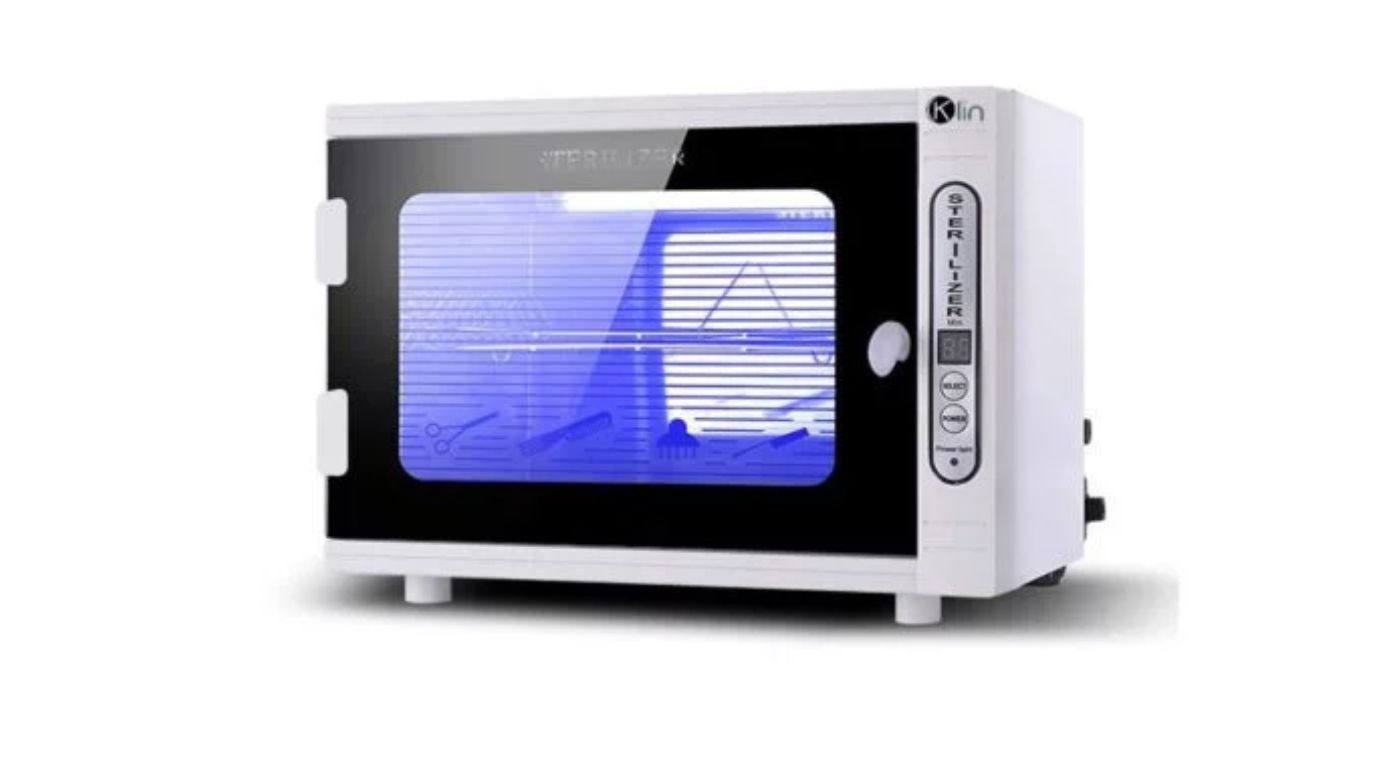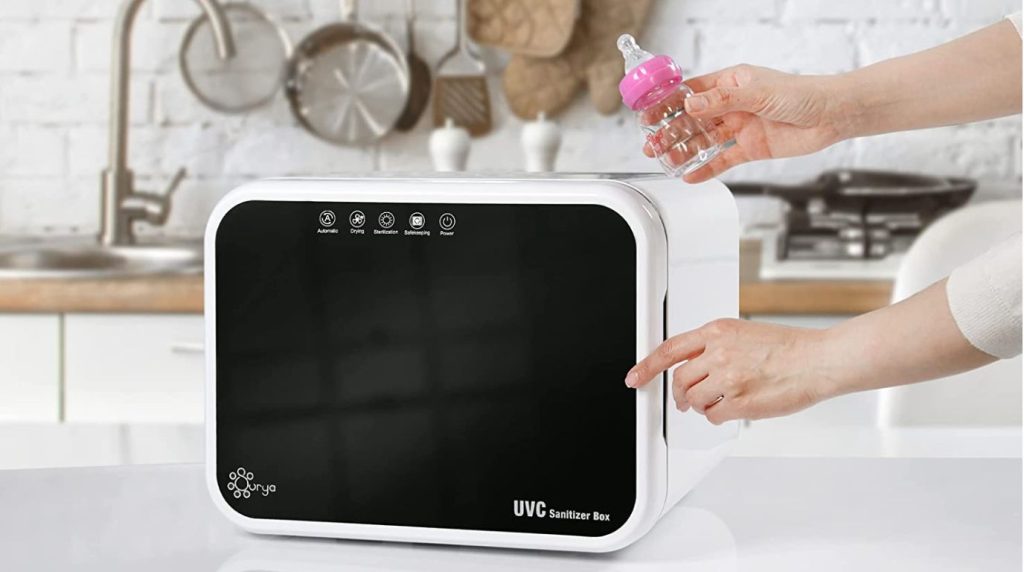A UV sterilizer is a device that uses ultraviolet (UV-C) light to kill or deactivate harmful microorganisms such as bacteria, viruses, and fungi. By damaging their DNA or RNA, UV sterilizers prevent these microbes from multiplying and causing infections. This chemical-free method is fast, effective, and widely used in various fields. UV sterilizers have diverse applications, including disinfecting drinking water, sterilizing medical instruments, purifying air in hospitals, and sanitizing everyday objects like phones, keys, and masks. Their ability to eliminate germs without harmful chemicals makes them a safe choice for both industrial and household use. Some of the key advantages of UV sterilizers are their speed, ease of use, and environmental friendliness. Portable UV sterilizers offer convenient on-the-go disinfection, making it easier to maintain hygiene in daily life.
What is a UV Sterilizer?
A UV sterilizer is a device designed to disinfect surfaces, air, or water by using ultraviolet (UV) light, specifically UV-C light, which has germicidal properties. UV-C light operates at wavelengths between 200 and 280 nanometers and is capable of penetrating the cells of microorganisms, damaging their genetic material (DNA or RNA). This damage prevents the microorganisms from reproducing and effectively neutralizes their ability to cause infections. Unlike traditional chemical disinfectants, UV sterilizers do not use any harmful substances, making them safe for various applications. These devices are available in different forms, such as portable wands, enclosed boxes, or integrated systems in water treatment plants and HVAC units. By emitting controlled UV-C light, they provide a reliable way to reduce or eliminate bacteria, viruses, and other pathogens from environments, objects, or liquids, contributing to improved hygiene and health safety.
Applications of UV Sterilizer
UV sterilizers are widely used across various fields due to their effective and chemical-free disinfection properties. One of the most common applications is in water purification, where UV sterilizers eliminate harmful bacteria, viruses, and protozoa, ensuring safe drinking water. They are also essential in medical settings for sterilizing surgical instruments, laboratory equipment, and hospital rooms, helping to reduce the risk of infections. In air purification, UV sterilizers are integrated into HVAC systems to kill airborne pathogens and improve indoor air quality, especially in hospitals, offices, and public spaces. Additionally, many people use portable UV sterilizers for disinfecting personal items such as smartphones, keys, masks, and other everyday objects. Industrial sectors also use UV sterilization to maintain hygiene in food processing and pharmaceutical manufacturing. Overall, the versatility of UV sterilizers makes them a valuable tool for enhancing cleanliness and preventing disease transmission in multiple environments.

What are the advantages of UV Sterilizer?
UV sterilizers offer numerous advantages that make them a popular choice for disinfection. One of the main benefits is that they kill bacteria, viruses, and other pathogens quickly and effectively without the use of harmful chemicals. This chemical-free process means there are no toxic residues or unpleasant odors left behind. Another advantage is their ease of use and low maintenance. UV sterilizers often require only periodic lamp replacements and minimal cleaning. They also work rapidly, disinfecting surfaces, air, or water in a matter of seconds or minutes. Additionally, UV sterilizers are environmentally friendly, as they do not produce chemical waste or byproducts. Portable models provide convenient on-the-go sterilization for personal items, making hygiene easier in daily life. Overall, UV sterilizers provide a safe, fast, and sustainable method to improve sanitation in homes, healthcare, and industries.
What are the disadvantages of UV Sterilizer?
Despite their many benefits, UV sterilizers also have some limitations. One major disadvantage is that UV light can only disinfect surfaces or water that the light directly reaches. Shadows or dirt can block the UV rays, reducing their effectiveness. This means that UV sterilizers cannot completely replace other cleaning methods in some situations. Another concern is safety. Exposure to UV-C light can be harmful to human skin and eyes, causing burns or eye injuries. Therefore, proper precautions and protective measures are necessary when using these devices. Additionally, UV sterilizers require regular maintenance, such as cleaning the quartz sleeves and replacing the UV lamps, since their effectiveness decreases over time. Lastly, the initial cost of high-quality UV sterilizers can be relatively high, which might limit accessibility for some users. Overall, understanding these drawbacks helps users to apply UV sterilization safely and effectively.
Conclusion
UV sterilizers have emerged as a powerful, chemical-free solution for effective disinfection in a wide range of settings. From the introduction, we learned that these devices use UV-C light to destroy harmful microorganisms by damaging their genetic material. Their applications span across healthcare, water purification, air sanitation, industrial hygiene, and even personal everyday use. Among their key advantages are fast and efficient germ elimination, environmental friendliness, and ease of use. However, they also come with limitations, such as reduced effectiveness in shaded or dirty areas, safety risks from direct UV exposure, and the need for regular maintenance. Overall, UV sterilization is not a complete replacement for traditional cleaning but serves as a highly effective complementary method. With proper usage and safety precautions, UV sterilizers can significantly enhance hygiene, reduce the spread of infections, and contribute to healthier living and working environments.
read more: UVC Disinfection System

